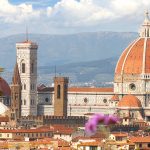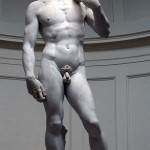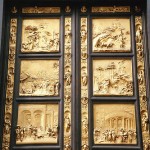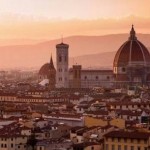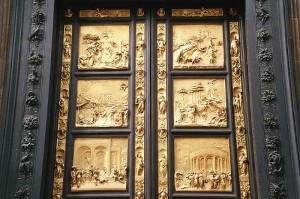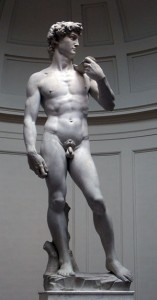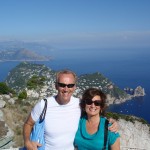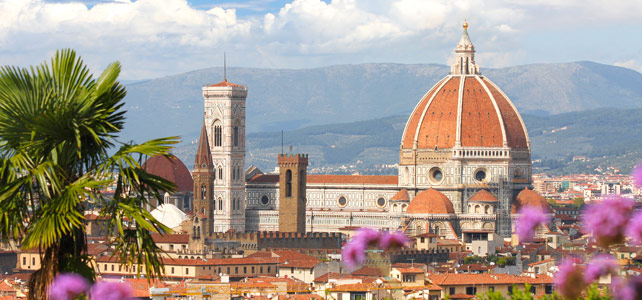 Florence is the stunningly beautiful capital of Tuscany and the most visited city in the region. It’s famed for being the home to some of the best-known masterpieces of the Renaissance as well as for its picturesque city center whose focal point is the Duomo and Brunelleschi’s dome. Florence has always provoked the imagination of its visitors. If you stop over in Florence on your next Italian vacation, you’ll see what I mean!
Florence is the stunningly beautiful capital of Tuscany and the most visited city in the region. It’s famed for being the home to some of the best-known masterpieces of the Renaissance as well as for its picturesque city center whose focal point is the Duomo and Brunelleschi’s dome. Florence has always provoked the imagination of its visitors. If you stop over in Florence on your next Italian vacation, you’ll see what I mean!
The history of Florence begins as a Roman colony, like most cities in Italy. In the Middle Ages it was overrun by Barbarians and Franks until Mathilda of Tuscia constructed fortifications. From there Florence expanded rapidly as a merchant and banking town.
You can’t spend much time in Florence without hearing the name Medici. It was Cosimo de’Medici who came into power through his family’s banking fortune in the 1400s. He put his power to excellent use, supporting the arts and artists like Donatello and Brunelleschi. Cosimo thrusted Florence, Italy, and the rest of the Europe into the Renaissance. His grandson Lorenzo followed suit. When Giovanni Medici became Pope in 1516, he secured commissions from Michelangelo and Leonardo Da Vinci.
Florence is located midway between Milan to the north and Rome to the South, making it a convenient tourist destination. There’s so much to see and do in Florence that you could spend weeks exploring the center and always discover another church, fresco, garden, or restaurant. Most of the major attractions are within walking distance, and Florence is very easy to navigate so that after a few days you may find yourself finding your way around town without a map.
The airport is five kilometers from the city center. The train station, Santa Maria Novella, is right in the center and makes traveling into Florence and out into Tuscany simple. Florence also has public transportation system of buses, but you might not need to use them since everything is so close and walking through the city so pleasant!
Autumn and spring are the best times to visit Florence and tour Tuscany. There are still many tourists, but the city isn’t too overcrowded. Summer is the busiest season, and you should expect crowds and heat if you choose to come to Florence and Tuscany at this time. Late autumn tends to be chilly and rainy, but it’s still warm enough to visit, and the crowds will have thinned by this time.
Things to See in Florence
Baptistry—The baptistry is the oldest building in Florence, dating from sixth or seventh century. Though it might be shadowed by the Duomo and Campanile in the Piazza del Duomo, it’s definitely worth a look inside. The bronze doors are the most praised of its features. Those on the south are by Andrea Pisano in 1336, and those on the north and east are by Lorenzo Ghiberti and represent a sublime innovation in art. (The originals can be seen at the Museo dell’Opera del Duomo.) Inside the Baptistry are also some impressive mosaics, on the floor and ceiling.
Capella Brancacci—When fire burned the church of Santa Maria del Carmine in 1771, somehow the connecting Capella Bracacci was saved from the flames. We are definitely lucky! The frescoes by Masolino and Masaccio are some of the best in all of Florence—if that’s even possible. The frescoes by Masaccio, painted when he was only 22, changed the landscape of painting forever.
Cappelle Medici—Though this chapel is named after the Medici who were buried here, it’s best known for the Sagrestia Nuova where some of Michelangelo’s best works are on display. The Capella dei Prinicipi is a grand affair of colored marble and high ceilings. It’s not a stretch of the imagination to think that when it was built it was the most expensive building project financed by the family. The Sagrestia is more subtle by comparison. The two opposing tombs and the Madonna and Child were carved by Michelangelo.
Casa Buonarroti—The house where Michelangelo lived intermittently between 1516-1525 is now a small museum. There are a few works by the master and many that were created in homage to him.
Casa di Dante—The home of the famous author of The Divine Comedy is found in the medieval section of Florence. There are several displays depicting Florence during the life of the author.
Duomo (Santa Maria del Fiore)—Because so many people are drawn to the Duomo and the surrounding piazza, it tends to feel like the center of the city. Coming onto the Duomo through the small winding streets can shock the unsuspecting visitor, for the brilliant marble of the facade contrasts sharply with the surrounding buildings. The main source of pride is the dome, constructed in 1436 after over twenty years of work. It was the architect Filippo Brunelleschi who designed this feat of engineering: the largest dome ever constructed for its time. You can visit inside the church, which isn’t as impressive as the outside, or climb the dome for some amazing views over Florence.
Palazzo Vecchio—Towering over Piazza della Signoria, the Palazzo Vecchio (or old palace) is still Florence’s town hall and was once home to several Medicis. Two of the most interesting rooms that can be visited are the Sala delle Carte and the Sala dei Gigli. Inside Sala delle Carte are 57 maps depicting what was the known world in 1563 and were painted by the court astronomer; the Sala dei Gigli is frescoed in lilies and has a dramatic statue of Judith and Holofernes by Donatello.
Piazza della Signoria—The Piazza della Signoria is the second best known piazza in Florence. The Palazzo Vecchio dominates the square, while the Loggia della Signoria with its myriad statues provide the busy atmosphere. Under the loggia you can find Giambologna’s Rape of the Sabine and Cellini’s powerful Perseus. Also in the piazza are the Neptune Fountain, the Marzocco lion (a copy) by Donatello, and David (also a copy) by Michelangelo.

Always charming Ponte Vecchio
San Lorenzo—Though San Lorenzo has a claim to being the oldest religious structure in Florence, the actual church wasn’t erected until the 1420s. Don’t think that the very austere brick facade is a prelude to what’s inside because it’s just the opposite. The powerfully simple interior was designed by Brunelleschi, and there are two spectacular bronze pulpits by Donatello.
Santa Croce—The church of Santa Croce is one of the most lavishly decorated in all of Florence. It was where the Franciscan monks were based and explains the stunning fresco cycle about the life of St Francis by Giotto. The Capella dei Pazzi was designed by Brunelleschi and embodies the renewed consciousness of the Renaissance through its classical symmetry. Santa Croce is also the last resting place for many famous Florentines, such as Michelangelo, Galileo, and Machiavelli.
Santa Maria Novella—The church of Santa Maria Novella is a land mine of frescoes from the early Renaissance. Take your pick from Masaccio, Filippino Lippi, Giotto, and Brunelleschi. Though the cycle fresco by Domenico Ghirlandaio behind the high altar takes the spotlight. You can also visit the museum if you haven’t had your fill of paintings in the church.
The Campanile—The elegant Campanile is just another part of the wonderful trio in the Piazza del Duomo. Begun by the painter Giotto, who wasn’t even an architect, the Campanile was finished by Andrea Pisano and Francesco Talenti. And luckily as they prevented the whole thing from falling down. Carvings and statues (the originals are in the Museo dell’ Opera del Duomo) by Pisano, Donatello, and others decorate this impressive monument.
Museums in Florence Italy
Florence has enough museums to keep even the most devoted museum goer busy for weeks. Here is a list of some of the best.
Palazzo Pitti and Giardini Bóboli—The Palazzo Pitti is the largest palace in Florence and consists of eight museums. The palace wasn’t built for the Medicis, but was bought by and added to by them. In the Galleria Palatina alone you can see works by Raphael, Titian, Rubens, and Fra’Filippo Lippi among many others. The Bóboli Gardens are manicured Renaissance gardens with several sculptures. Escape the bustle of the city with a walk through these calming pathways.
The Accademia—So-called because it was the home to Europe’s first academy of drawing, now the Accademia is best known for the statue of David by Michelangelo. It really is a wonder to come face to face with that towering statue carved from one block of Carrara marble.
The Museo Archeologico—If you need a break from all the Renaissance wonders around Florence head to the city’s Archaeological Museum. There are Egyptian, Etruscan, Greek, and Roman collections. Two bronze statues from Etruscan times easily make a visit worth it.
The Uffizi—The Uffizi is, hands down, the best art gallery in all of Italy. Even the building itself is enough to make anyone swoon. It was built as offices for the Medici family (uffizi means offices in Italian), and made one of the finest working environments ever, with its spectacular views over the River Arno. The works inside range from before the Renaissance to the eighteenth century and were painted by more than just Italians. Some of the most famous pieces are by Botticelli, Da Vini, Raphael, and Titian.
Places to Stay in Florence
Visitors have several options of hotels in Florence, both in the center of town and on the outskirts. Prices vary according to the clientele and location with the closer you are to the center being the more expensive. If you want to stay to explore the city longer you might want to consider renting an apartment. If you prefer to experience the idyllic countryside outside Florence, taking a room at one of the many agriturismi is a good choice for some peace and quiet.
Eating in Florence
The dining in Florence is amazing, with a wide variety of restaurants throughout the city. You’ll no doubt try several Tuscan dishes, all made with the freshest ingredients. You can’t leave Florence without trying a bistecca alla fiorentina, a massive grilled steak that’s pink in the middle. If you’re vegetarian don’t worry. Tuscany also specializes in cannellini beans that are used in everything from pastas to soups. If you rent an apartment with a kitchen for your tour of Tuscany, you’ll want to pick up some fresh ingredients at the local marketplace. The mercato centrale is a covered market in Florence’s center and makes a great place to watch the locals shop even if you’re not buying any veggies.
